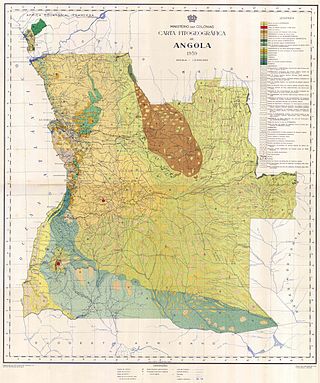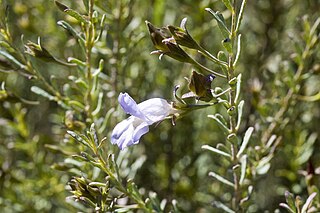Spencer Le Marchant Moore was an English botanist.
Sheareria is a genus of Chinese plants in the tribe Astereae within the family Asteraceae.
Artemisiopsis is a genus of flowering plants in the daisy family, Asteraceae.
Drosera moorei is a scrambling or climbing perennial tuberous species in the carnivorous plant genus Drosera. It is endemic to Western Australia and grows near granite outcrops in sandy loam. D. moorei produces small, circular, peltate carnivorous leaves along glabrous stems that can be 12–35 cm (5–14 in) long. Inflorescences have two to ten yellow flowers and bloom from September to October.
Emiliella is a genus of African flowering plants in the daisy family.
Delamerea is a genus of flowering plants in the daisy family.
Gossweilera is a genus of African flowering plants in the daisy family.
Nicolasia is a genus of African flowering plants in the tribe Inuleae within the family Asteraceae.
Rhamphogyne is a genus of plants in the tribe Astereae within the family Asteraceae.
Cratystylis is a genus of Australian flowering plants in the family Asteraceae.

Johannes Gossweiler aka John Gossweiler or João Gossweiler, was state botanist to the Government of Angola from 1899 until his death. He made important collections in every district of Angola and created the first phytogeographic map of that country. His collections of African plant specimens were sent regularly to Lisbon, the British Museum, the Royal Botanic Gardens, Kew, and the University of Coimbra. Duplicates were also kept at the Herbarium of the Instituto de Investigação Agronómica in Angola. Today, many herbaria contain specimens he collected.

Melaleuca spicigera is a plant in the myrtle family, Myrtaceae, and is endemic to the south-west of Western Australia. It has wavy, stem-clasping, blue-green leaves and spikes of pink flowers in spring.

Eremophila pustulata, commonly known as blistered eremophila is a flowering plant in the figwort family, Scrophulariaceae and is endemic to Western Australia. It is an erect shrub with fleshy, warty leaves and purple, lilac, violet or white flowers.

Eremophila sargentii is a flowering plant in the figwort family, Scrophulariaceae and is endemic to Western Australia. It is a shrub with sticky, shiny foliage, small leaves and mauve or blue flowers.
Verticordia helmsii is a flowering plant in the myrtle family, Myrtaceae and is endemic to the south-west of Western Australia. It is a shrub with most of its leaves clustered on short side branches and with small groups of scented creamish-white flowers in small groups along the branches.
Enekbatus clavifolius is a shrub endemic to Western Australia.
Barleria elegans is a species of plants in the family Acanthaceae. It is found in South Africa.
Herbert Fuller Wernham was a British botanist, who from 1909 to 1929 worked at the British Museum, as an assistant in the botany department. From 1911 to 1921 he published extensively on tropical plants and many genera, retiring in 1921 due to ill health (alcoholism).

Amyema nestor is a species of epiphytic hemiparasitic plant in the family Loranthaceae. It is native to Western Australia, and found growing only on acacias.
Goodenia mimuloides is a species of flowering plant in the family Goodeniaceae and is endemic to inland areas of Western Australia. It is a low-lying to ascending, densely hairy herb, with narrow egg-shaped, toothed or lobed leaves, and racemes of yellow flowers.




